A Tale of Unexpected Tortoises
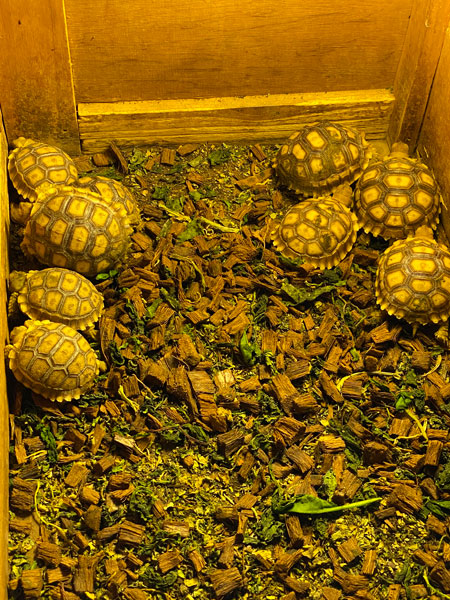
Caring for my diverse group of tortoises, which includes four different species, is a constant challenge. I make a conscious effort to keep the sexes apart, as I don’t want to deal with the responsibility of finding homes for their offspring. The winter months bring another set of challenges, as I need to bring most […]
The Omnivorous Adventures of My Red-Footed Tortoises
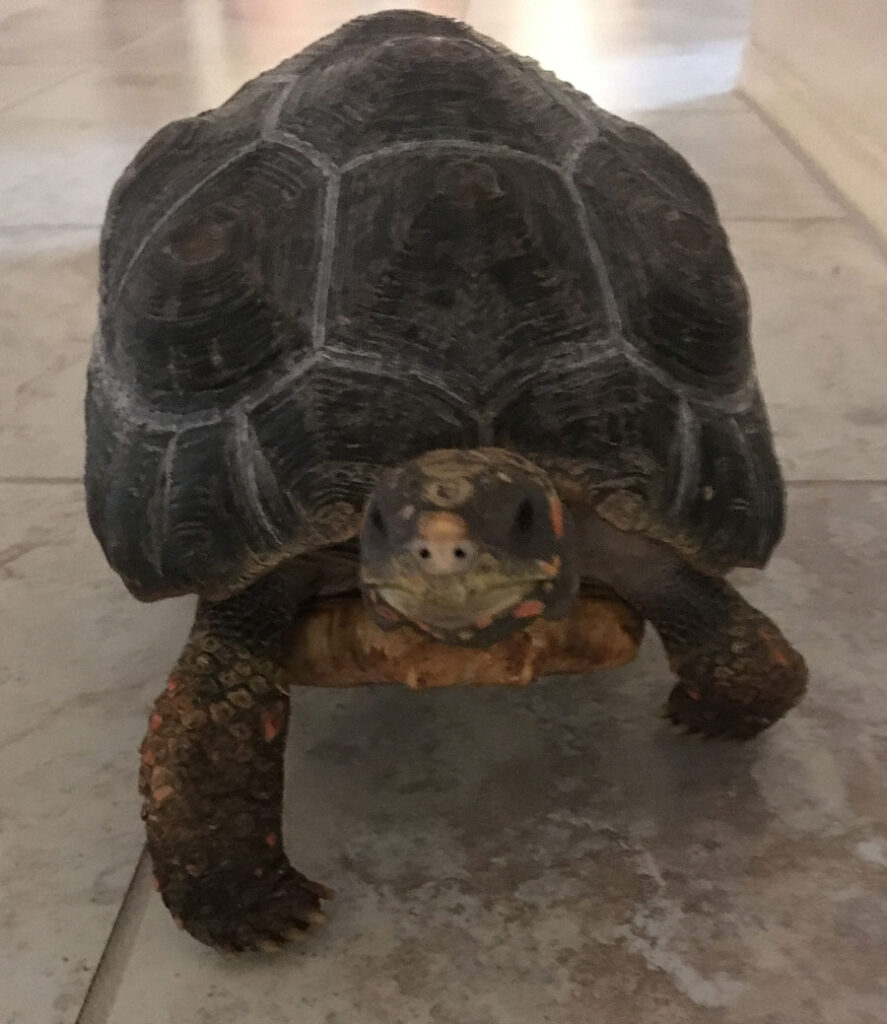
Many tortoises are vegetarians, but my red-footed tortoises are a unique bunch. They roam free throughout my house, enjoying the heat lamp and UVB basking light I’ve set up for them. They seem to have a sixth sense for when I’m preparing a meal in the kitchen. The three red-footeds (Myrtle, Gladiola, and Rose) make […]
Tales of Turtles: A Look into the World of Sea and Freshwater Turtles
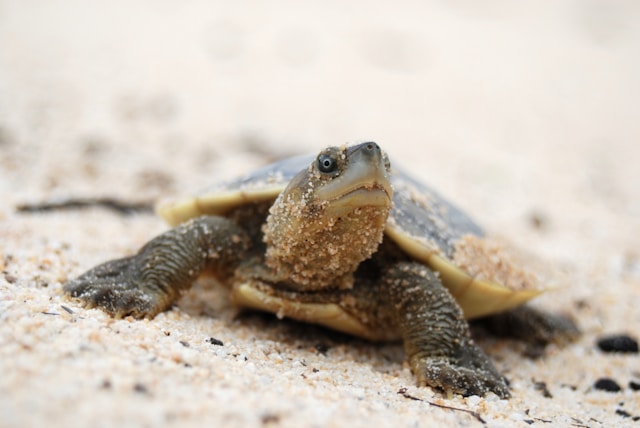
Many places in the world have sea turtles, which live in the ocean, and freshwater turtles, which live on land, often in lakes and rivers. These two types of turtles have significant morphological differences. Sea turtles have flippers instead of hands and feet. Those turtles dwelling out of the ocean have hands with fingers and […]
Choose Another Corner!
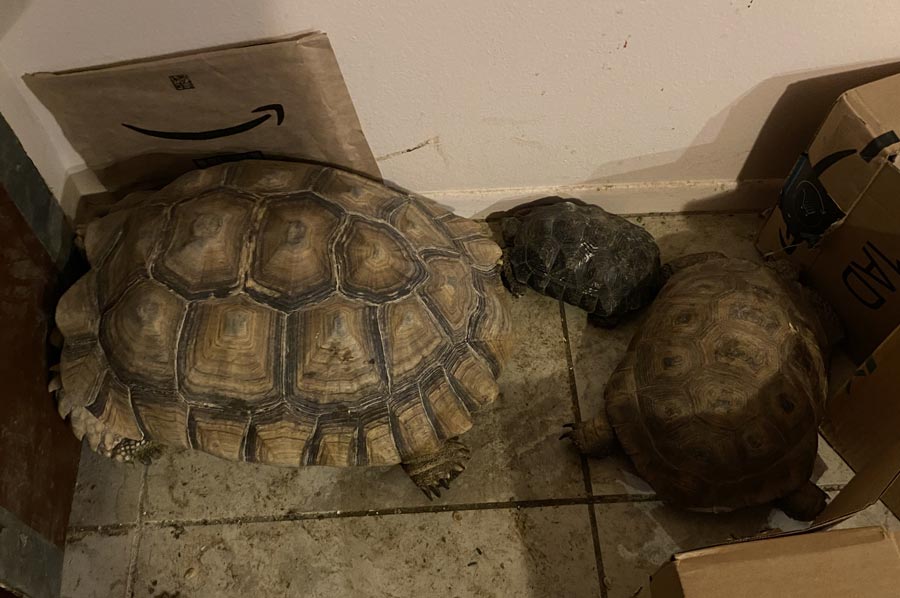
I live in a good-sized house. It has four bedrooms and two large living room areas with many corners. Having corners is very important to my family. This makes more sense when you know that most of my family members are reptiles: lizards, turtles, and tortoises. Free to Roam (and Fight) The tortoises are free-roaming. […]
As Fast as a Tortoise
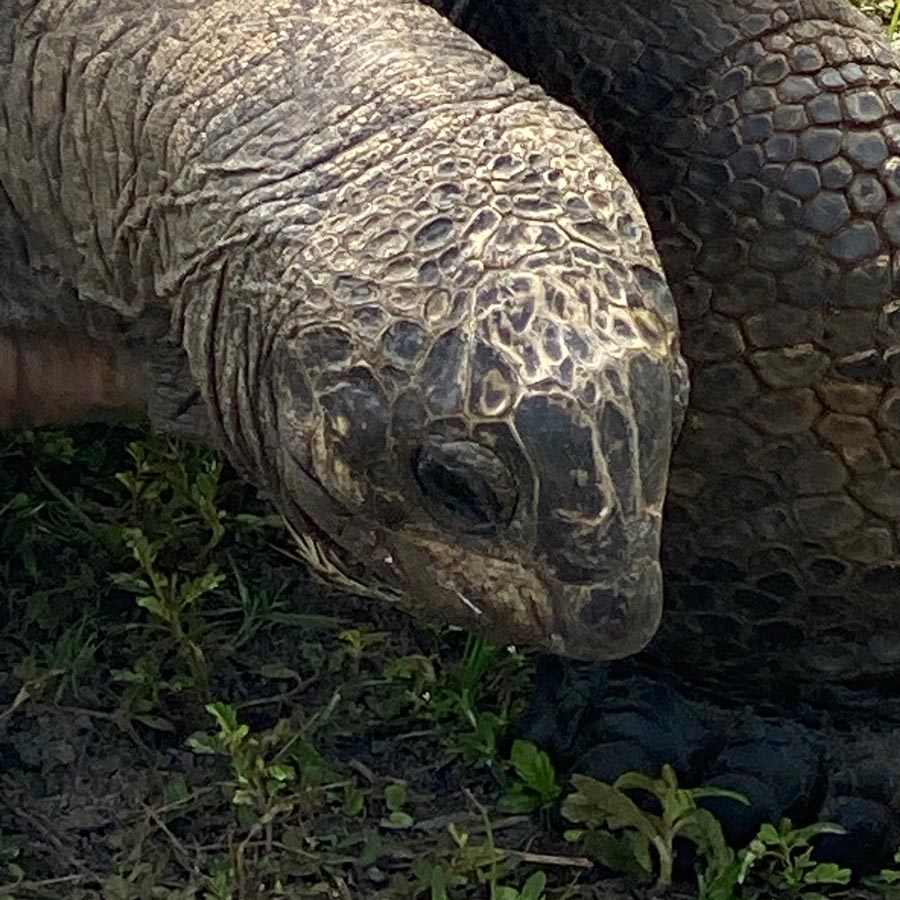
At Iguanaland in Punta Gorda, FL. I met a very friendly Aldabra tortoise named Aly. Aly was enjoying a graze of the grass when I strolled by. She looked up, saw me, and rushed over. Okay, ‘rushed’ is an exaggeration. Even though she was moving towards me with purpose, it was more of an amble. […]
Vampire…Tortoise?!
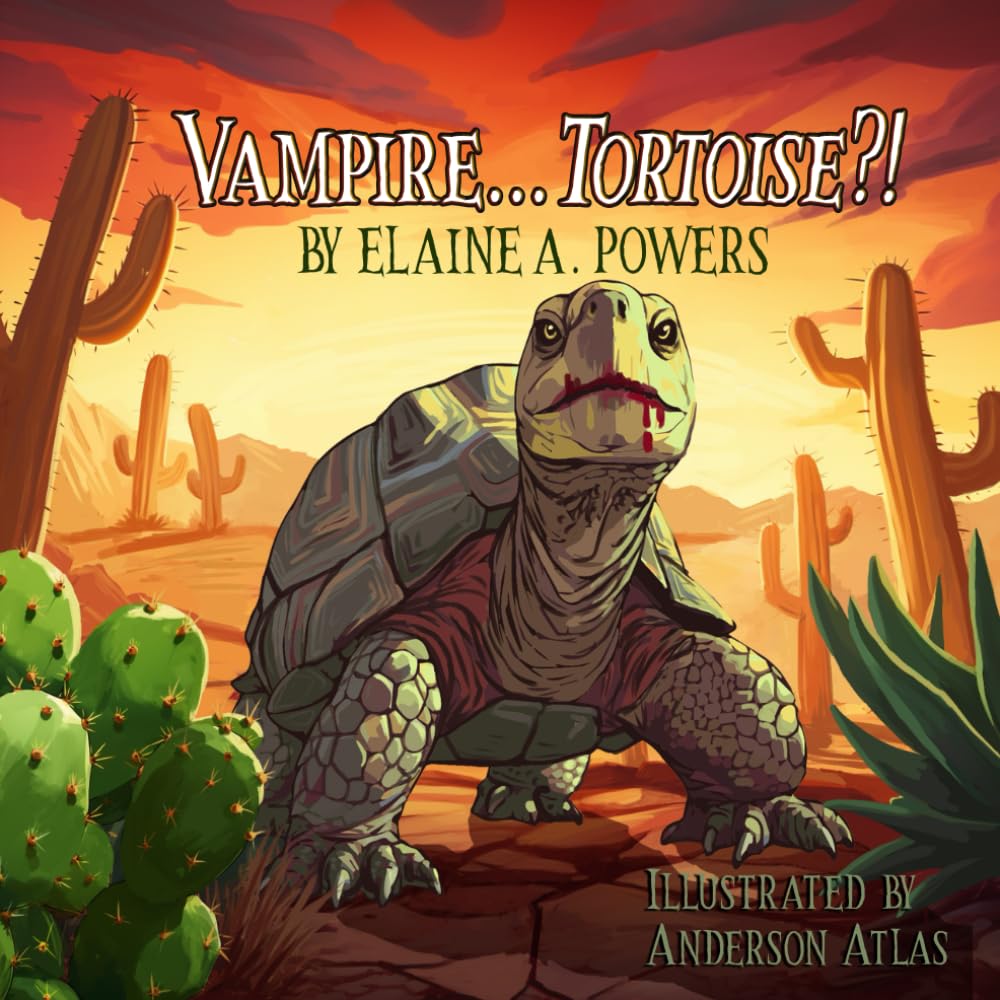
What do you think of when you hear or read the word ‘vampire’? Does your mind go to the human Count Dracula, or perhaps it’s to bats? Members of the Desmodontinae bat subfamily feed on the blood of other animals. Consuming blood is called hematophagy. But not just bats are vampires. There are the candiru […]
Turtles and Tortoises Don’t Age?
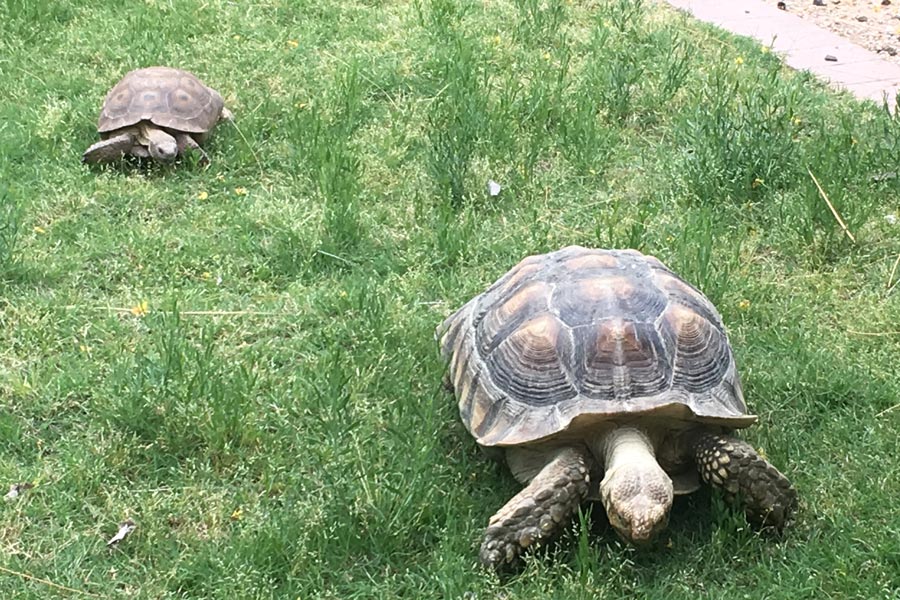
Recently, one of my iguana companions died. Ezra, a green iguana (Iguana iguana), finally succumbed to old age. A green iguana, a very common pet lizard, Ezra had lived with me for 20 years after coming to my iguana rescue in New Jersey as a full-grown adult. He must have been at least 5 years […]
Life with My Rascally Reptiles
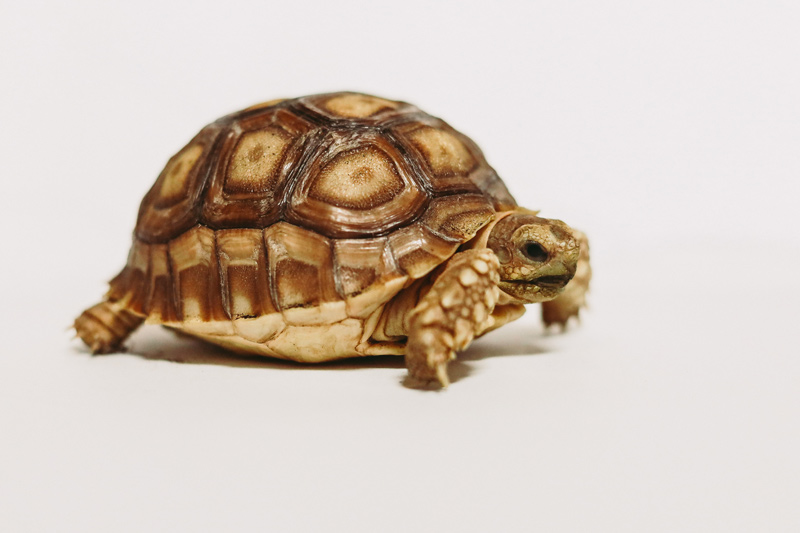
Home sweet home. What do you think of when you think of home? Family? Safety? Danger? Well, maybe not danger, but there are so many things to trip over while going about one’s daily routine. Parents often complain about their children’s toys lying about on the floor, rug edges, strewn clothes, etc. My house is […]
Shell-a-Brate World Turtle Day!
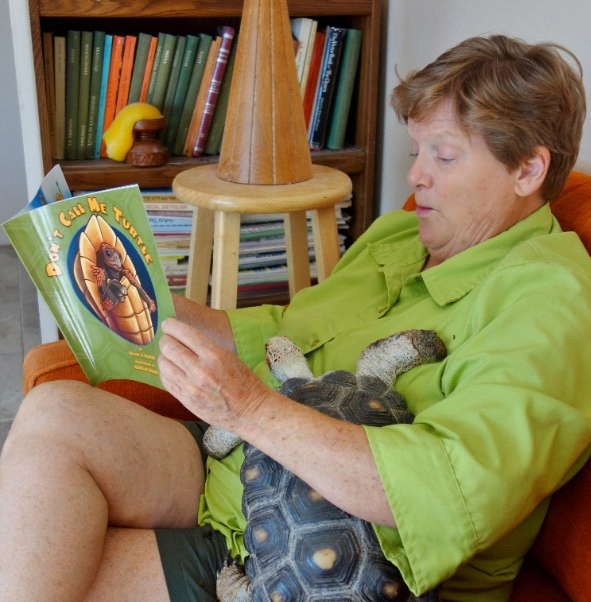
If you are familiar with my writing, you’ll have noticed that turtles are a frequent topic. But wait, you may say, I thought you usually wrote about tortoises? I hate to admit it, but tortoises fall into the category of turtles! Please don’t tell Myrtle, my red-foot tortoise. I wrote my first rhyming picture book, […]
Why Don’t I Write That?
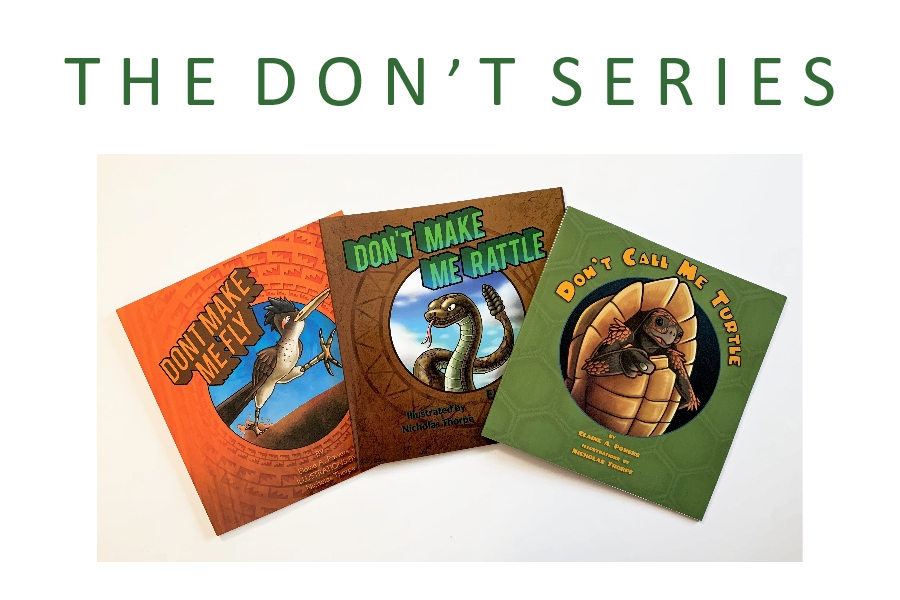
I’m so happy in-person book sales are returning. I love speaking to people about my books and about the importance of science education through children’s books. Many people are delighted to find my books and often suggest other topics for me to write about. I write them all down. My most popular books are my […]
A Bite of a Blog: Feeding my Scaly Family
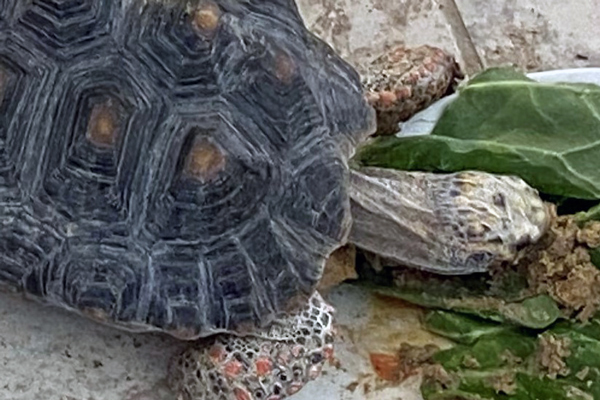
There’s a lot of talk about eating. People are encouraged to eat mindfully. Set the table and concentrate on your meal. But, I prefer to eat in front of my laptop. I like to spend most of my free time putting words onto pages. I enjoy writing books and blogs. So, when I get hungry, […]
You Say Hibernate, I Say Brumate
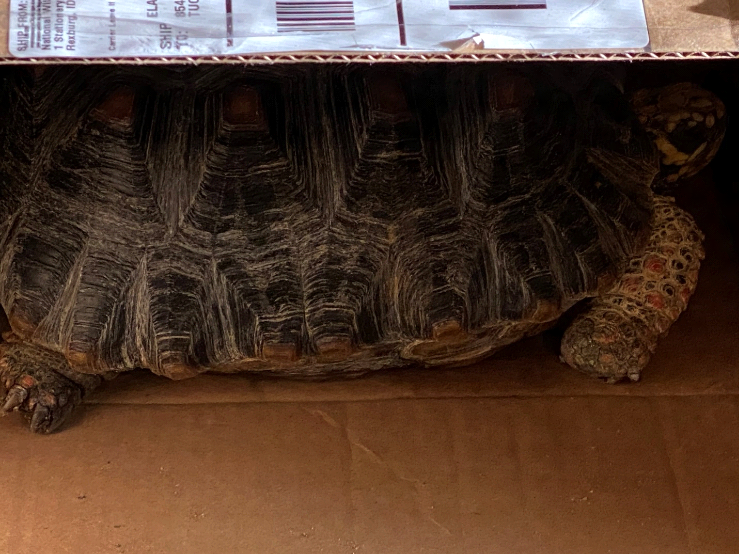
During the summer, two of my desert tortoises are allowed to roam outside. Zoe is a Sonoran desert tortoise, Gopherus morafka, and part of Arizona’s desert tortoise foster program. Cantata is a Sulcata tortoise, Geochelone sulcata. Native to sub-Saharan Africa, sulcata tortoises can reach 200 lbs. They’re also known as spur-thighed tortoises due to the spurs on […]
Iguanas and Tortoises are… Invasive Species?
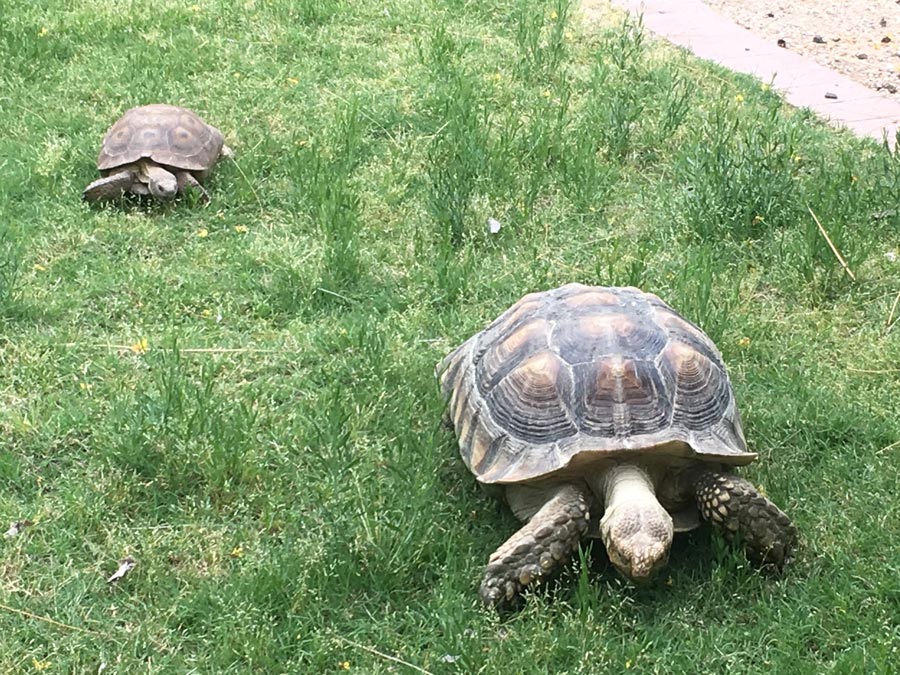
Invasive species are a common topic in environmental discussions these days, and rightfully so. Often, these concepts seem to deal with invasive plants or animals that affect people and places far away. But if you’ve ever watched my Reptile-Side chats, or witnessed one of my school or community visits, you know my non-human housemates […]
Scientists Love Their Scat! And I Am One!
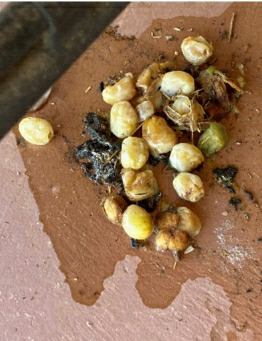
Scientists have long been using scat as a valuable tool in figuring out what animals have eaten. The indigestible parts pass through and are excreted. Some items can be easily identified, but others require a bit of investigation. When the temperatures were warm enough, I let my sulcata, or spur-thigh, tortoise loose in my walled-in […]
Prize-Winning Size Found in My Kitchen!
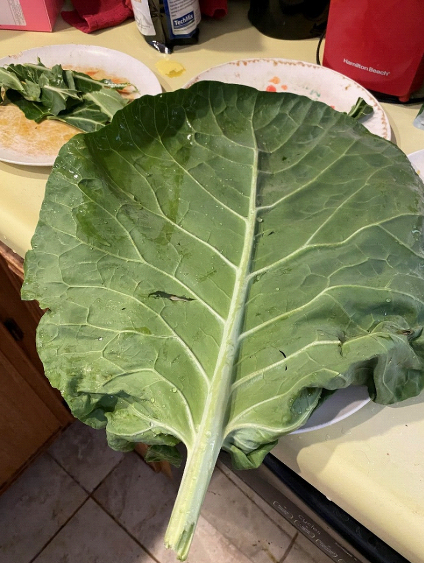
Have you eaten your leafy green vegetables today? You should! Vegetables are important for a healthy lifestyle. My family members would agree – they are herbivores, and they enjoy their leafy greens. People may eat their greens cooked or raw. My reptiles prefer their greens raw. These collard leaves are important sources of calcium, iron, […]
Mirror, Mirror on the Wall, Who’s the Prettiest Head of All?
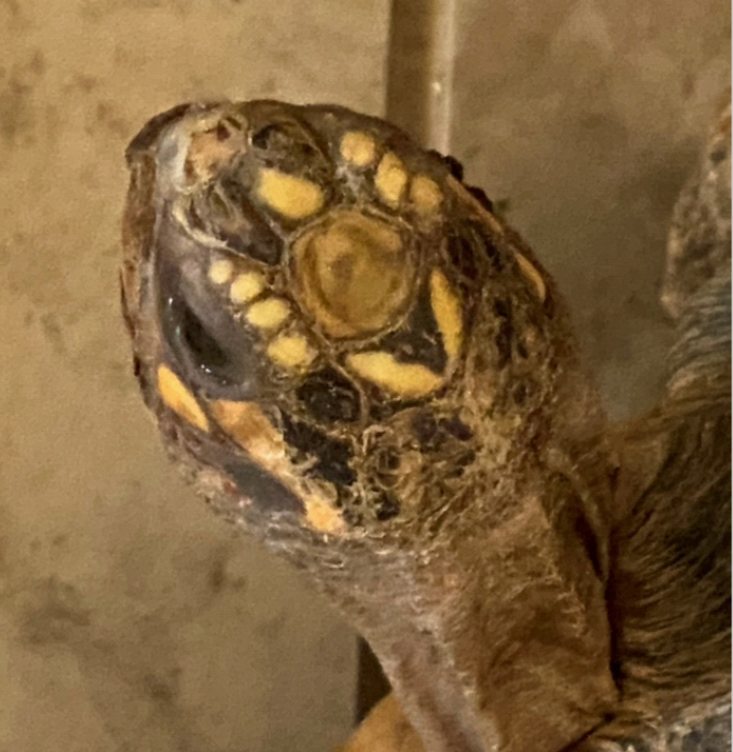
Red-footed tortoises, Geochelone carbonaria, are popular pets. These natives of Central and South America are easy to care for and don’t get too big, growing up to 30 pounds. They are also known for the bright colors on their skin and shell, including their namesake red scales on their legs. Recently, I noticed how vivid […]
That Shell Might Not Look Comfy to You and Me, But to Ezra?
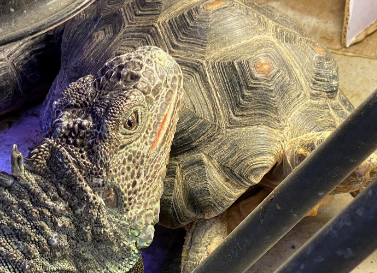
I have a suspended heat lamp that the tortoises like to use. They gather together underneath to share in the warmth. The tortoises chose their spot, then sit down and bask for a while. Recently, Ezra Green Iguana was out for a stroll and happened across the non-creeping creep of tortoises. Ezra pulled himself up […]
A Creep or a Convergence?
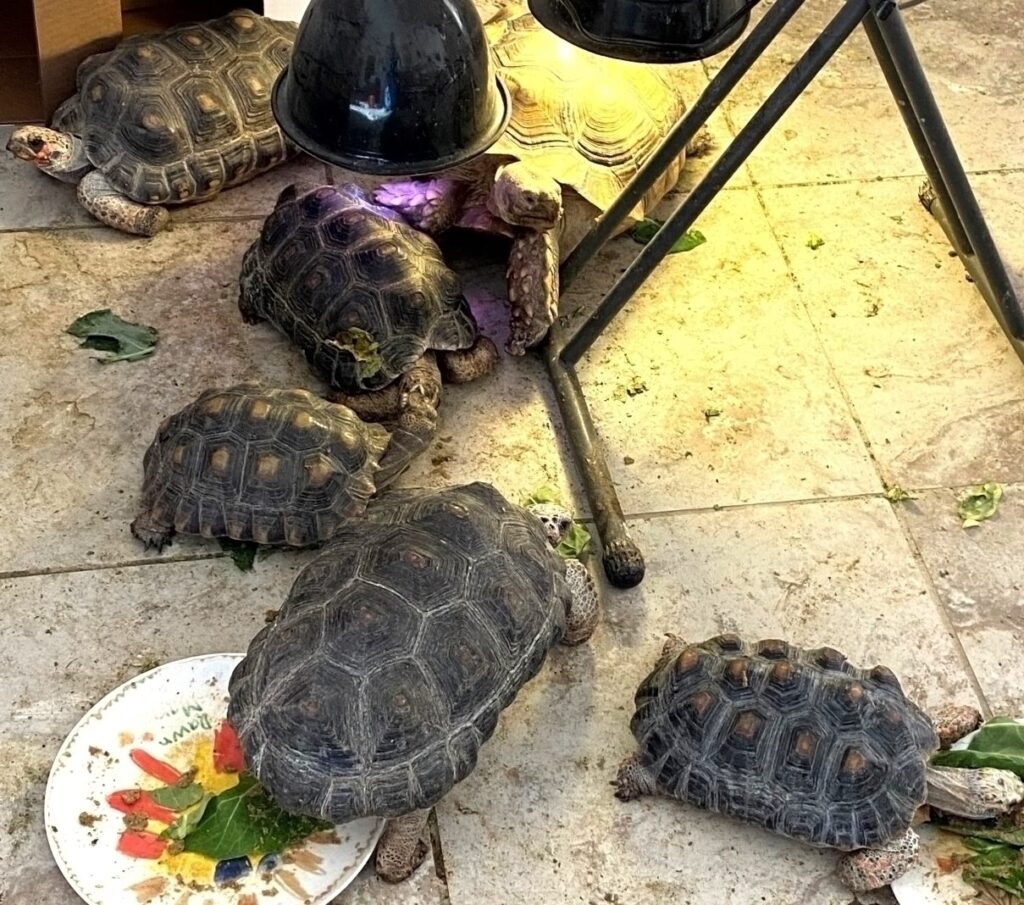
With Spring, the tortoises wander about more actively. The brumating species, like the Sonoran Desert and Sulcata tortoises, emerge from my bedroom to join the now more ever-wandering red-footed tortoises. I have a heat lamp set up in the front room where the tortoises can sit and bask. Usually, one or two will be utilizing […]
Pandemic Life, Pandemic Dreams—and Tortoises!

I’ve always had vivid dreams, many that I can fully remember when I wake up. Most are filled with action (being chased or falling), which doesn’t really bother me. However, every now and then I have a bad dream that wakes me up with a start and a surge of adrenaline. I’ve forgotten to do […]
My Computer is Padded: Reptile-Side Chats Here I Come!
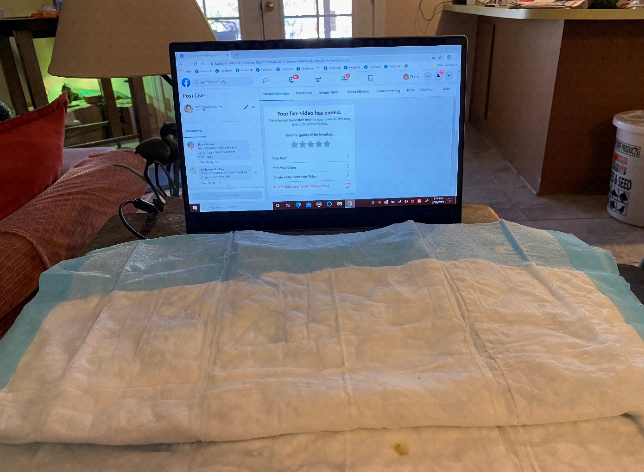
In previous posts, I mentioned the lessons learned from doing Facebook Live talks. I was able to continue them last week with my new laptop. New, because my Sonoran Desert tortoise peed on my old laptop and killed it. I did hold her up for 12 minutes, and she showed great restraint, so it really […]
The Facebook Live Learning Curve–Post Two: Pee on Set
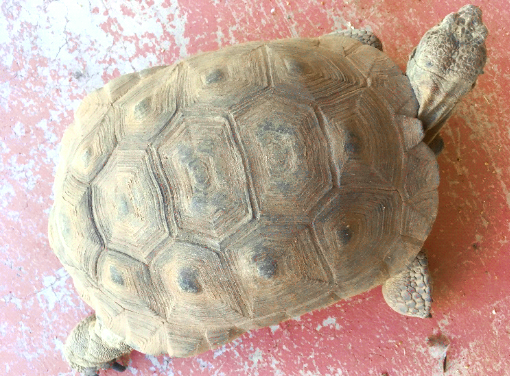
In a previous blog post, I mentioned the surprises I had in my first Facebook Live talk. My second talk with my iguana went well and I thought I knew what I was doing. Hah! For my third talk, I showed my Sonoran Desert Tortoise and I mentioned how reptiles urinate when they are stressed. […]
January 28th is NATIONAL HAVE FUN AT WORK DAY
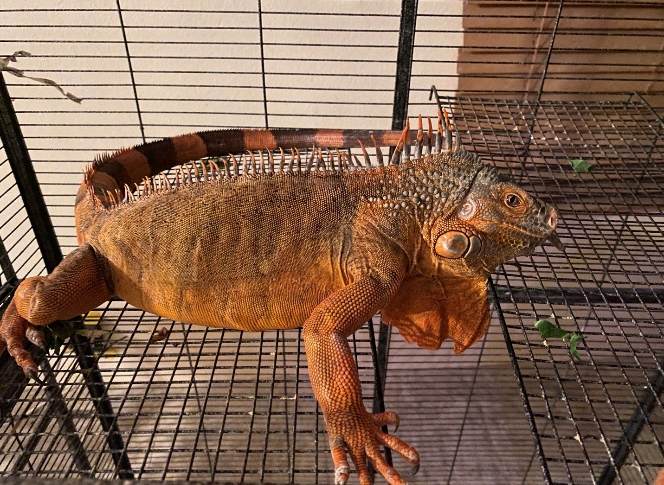
Working from Home with our Pets January 28th is National Have Fun at Work Day and with the pandemic, many people who would go to work in an office or at least away from home, are now telecommuting or video conferencing. We find ourselves trying to convince our companion-animal family members to maintain professional boundaries. […]
The Box-Tortoise
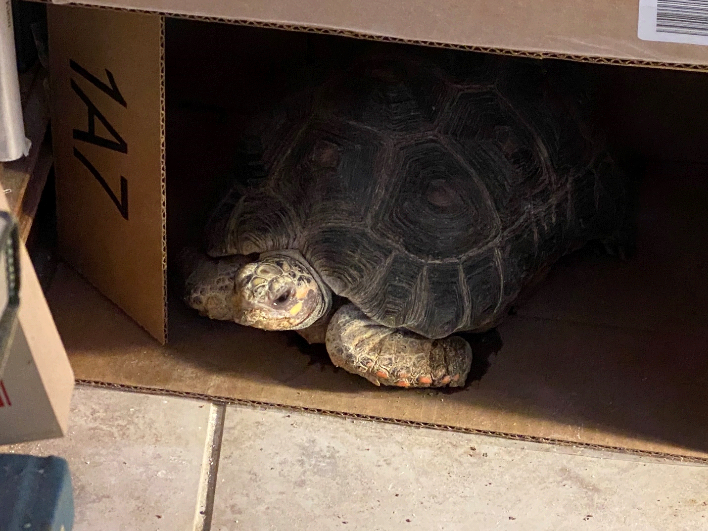
Photo Above is Amarillo the Redfoot Tortoise (Chelonoidis carbonaria) In some of my books and videos, I mention box turtles, genus Terrapene. These are amazing turtles that, because of a hinge on their bottom plate–the plastron–can fold up to protect their heads and limbs. No predator can grab an arm if it’s tucked inside a […]
Beauty in Unusual Places

With social distancing, I’ve been spending more time observing at my house. Maybe it’s the isolation, but I’m finding beauty in unusual places. Because of the drought this summer (no monsoon rains in 2020), my grass dried up and the outdoor-living tortoises ate more plants than usual since they had no grass to graze on. […]
The Mystery of the Cleaning-fiend Tortoises
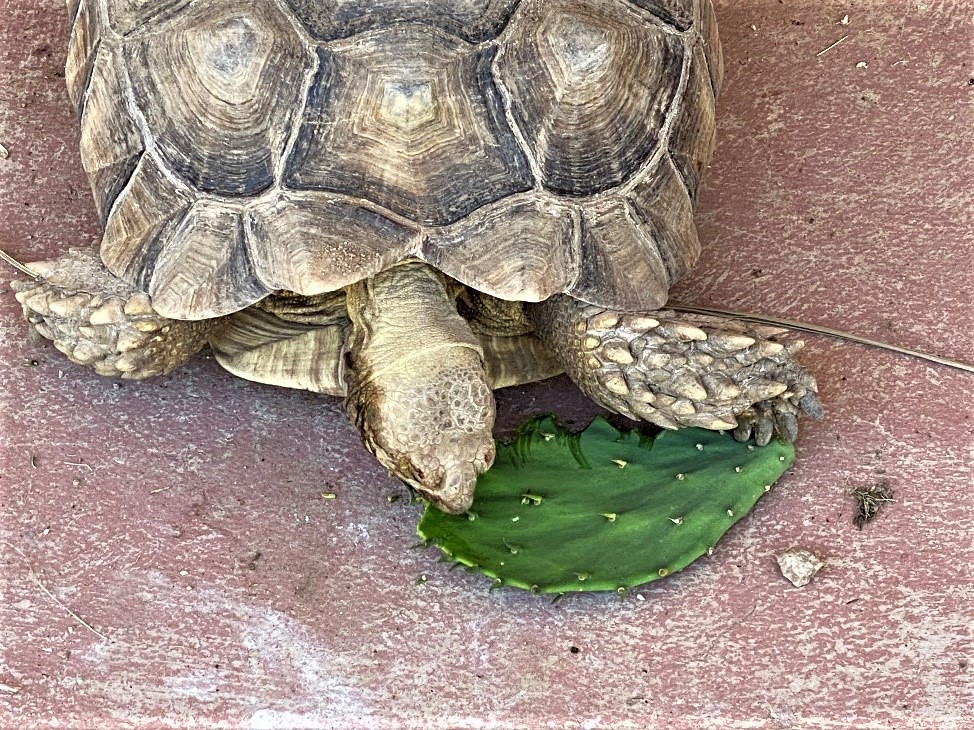
Above image is of Cantata, an African Spurred or Spur-thighed Tortoises (Geochelone sulcata) and a member of my family Is this a species thing? I have several species of tortoises roaming about my house. Tortoises are not potty-trained, so every now and then I have to mop to clean the floor. After sweeping and spraying […]
Did You Know Reptiles Have Sleepovers?
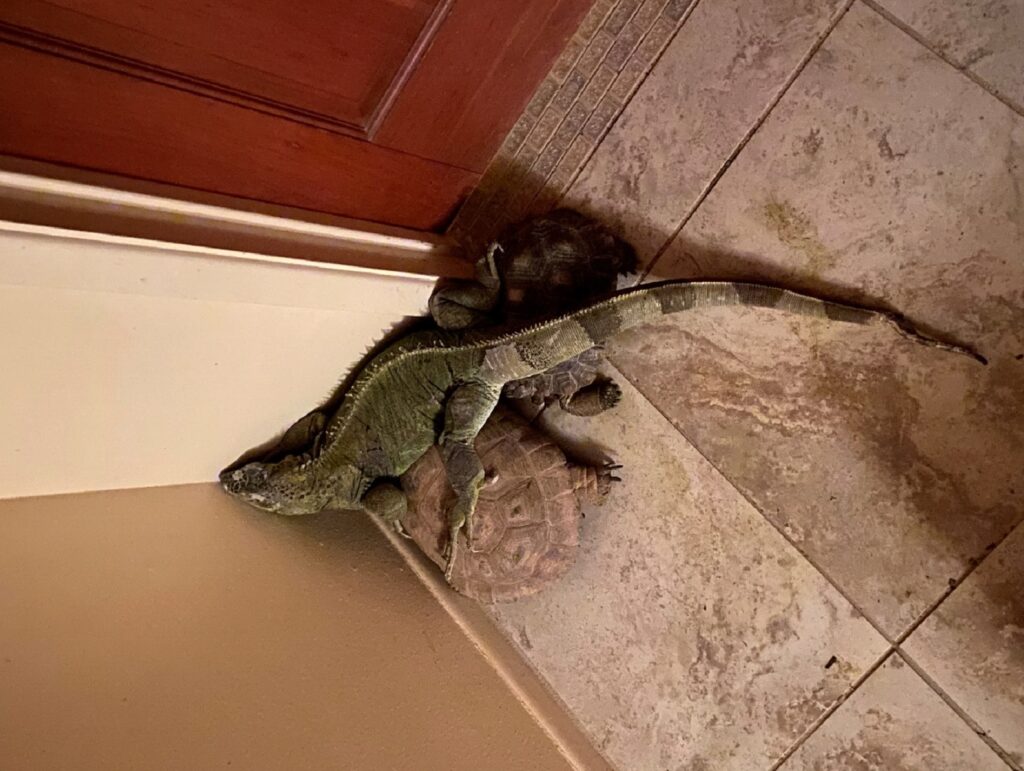
Did you know reptiles have sleep-overs, too? While mammals hibernate in cold weather, reptiles brumate. I’m not just talking about different species cohabitating, or sharing dens, during brumation. No, I’m talking about reptiles sleeping over when they are inside a dwelling–even those that have entire houses to roam and numerous corners to sleep in. Take […]
Desert Dwellers Worshipping the Rain! by Curtis Curly-tail Lizard
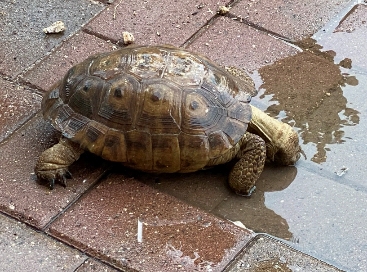
Hello, everyone! I’m Curtis Curly-tail. You may know me as the perfect Curly-tail lizard from the Bahamas with an itch for adventure. OR, perhaps you’ve seen me starring at my very own YouTube page, Curtis Curly-tail Speaks. Well, of course, I do! I am perfect, as they say! Every morning I start the day by […]
Ouch! Cactus Exposed By Curtis Curly-tail Lizard!
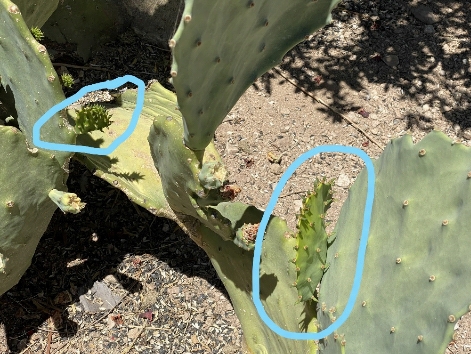
Perhaps you’ve read my stories about reptile meals in my blog posts and on my YouTube Channel, Curtis Curly-tail Speaks! I like helping my human friends prepare the meals for my reptilian companions. This morning I was collecting pads from the prickly pear cactus for the desert tortoises. I only harvest the young pads due […]
See What Happens!
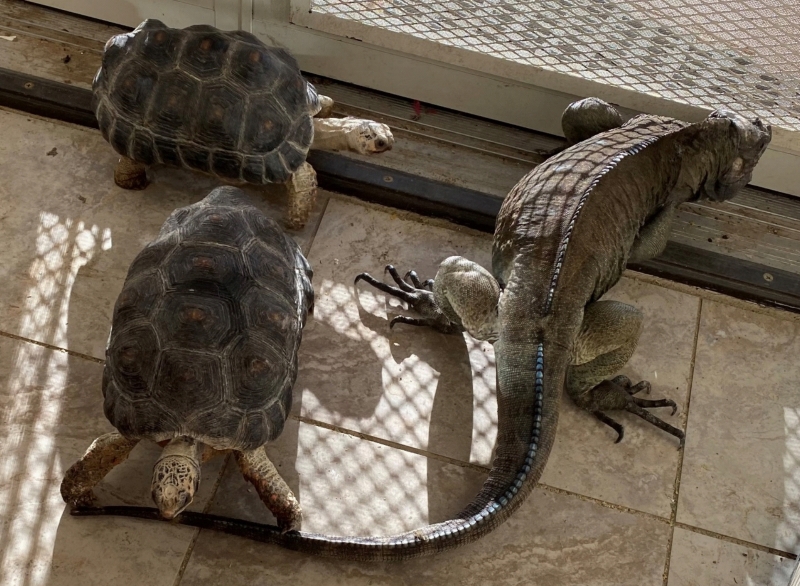
Red-foot tortoises (Chelonoidis carbonarius), like Gladiola, are omnivores, which means they eat meat, as well as vegetables and fruits. Being tortoises, they don’t run down prey like a wolf after a deer. No, they look for slow moving animal tidbits or carrion. Any opportunity for some protein should be explored, as shown by Gladiola here. […]
Hey, Fans! Here’s My Next Video: All About Cantata Sulcata
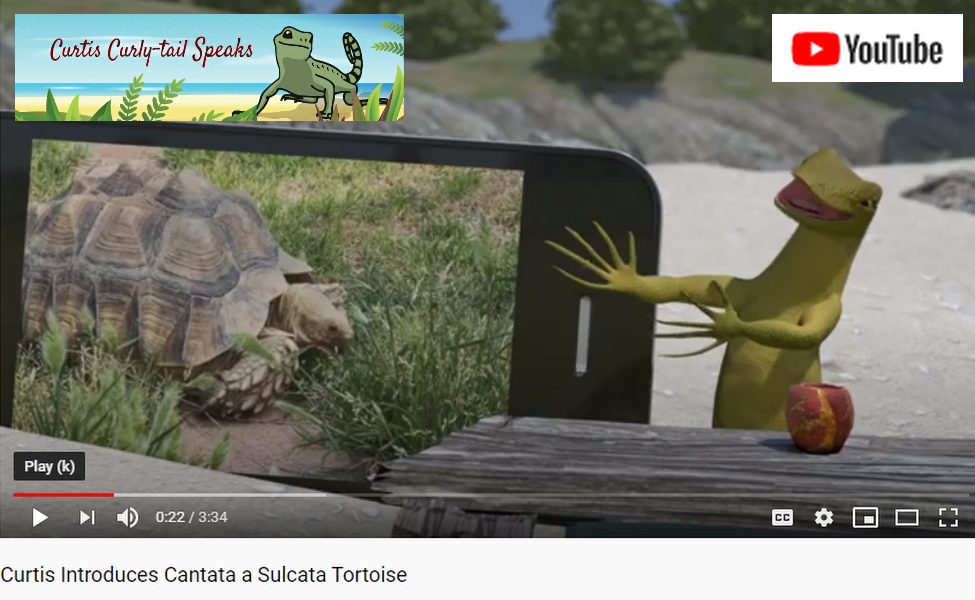
Hi, everyone! It’s me, Curtis Curly-tail Lizard and have I got a video for you! I figured you fell asleep last night thinking about Sulcata tortoises and you wondered: Do they make good pets? Click here on Curtis Curly-tail Introduces Cantata Sulcata to learn all about my friend, Cantata, and these special tortoises. Thanks, and […]